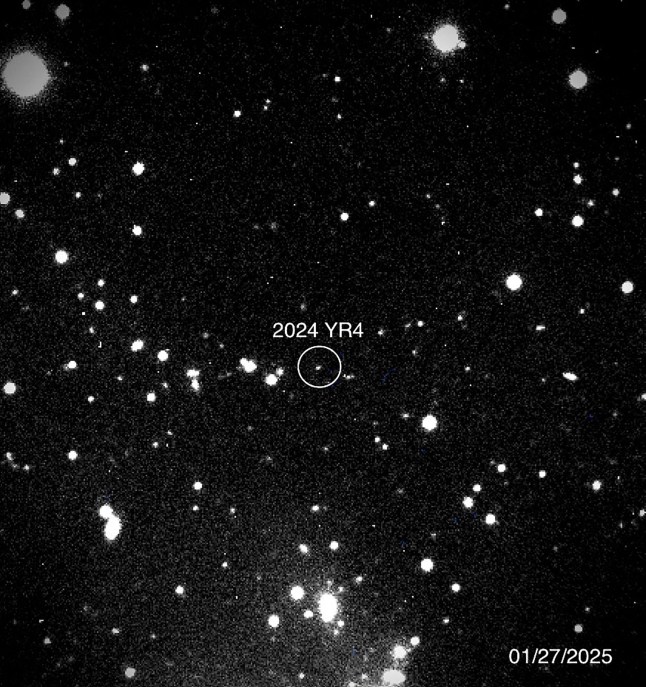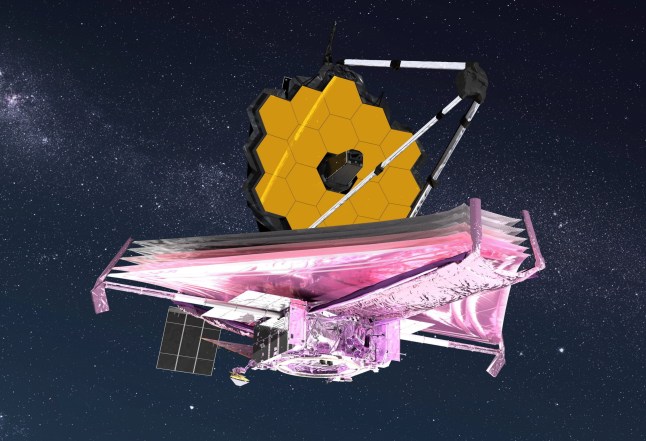

NASA is making emergency preparations to deal with a ‘city-killing’ asteroid after the odds of it smashing into Earth continue to rise.
Astronomers are keeping a close eye on Asteroid 2024 YR4, which currently has a 2.3% chance of colliding with the Earth in 2032.
The 300ft wide rock is roughly the same size as the Statue of Liberty or Big Ben, and has shot to the top of NASA’s watch list after it was first discovered in December 2024.
With the ‘time-critical meteor hurtling towards our atmosphere at an alarming rate, the space agency has enlisted the help of the James Webb Space Telescope to study YR4 and gauge how much damage it would cause if it did strike our planet, the European Space Agency reports.

Asteroid 2024 YR4 currently has a 2% chance of hitting Earth with a force 100x greater than a nuclear bomb (Picture: AFP)
Based on current calculations, a strike from YR4 would be roughly equivalent to the Tunguska asteroid, which flattened 830 square miles (2,150 square km) of Siberian forest in 1908.
However, early estimates of the asteroid’s size could prove incorrect.
Scientists currently predict the size of asteroids by using powerful telescopes to measure the light reflected from its surface.
In general, the larger an asteroid, the brighter it will appear, but this is not always the case, and as all earth-based telescopes have to contend with the earth’s atmosphere, which bends and distorts light passing through it, the exact size of celestial bodies can be unclear.
To overcome this, astronomers are preparing to use the James Webb Telescope – the largest and most powerful telescope ever made, which was launched into space in 2021 and currently resides 1 million miles (1.5 million km) away from Earth.
Using its suite of infrared sensors, the JWST will also look at the heat radiating off the asteroid, which gives a much more accurate estimate of its size.
This information will allow Earth’s planetary defence organisations to determine whether action is needed to deflect the asteroid.

Astronomers have deployed the James Webb telescope to observe the giant asteroid (Picture: NASA / SWNS)
An ESA spokesperson said: ‘Astronomers around the world are using powerful telescopes to measure the asteroid’s orbit as accurately as possible. But knowing its orbit will only tell us the asteroid could impact Earth, not how significant an impact could be.
‘It is very important that we improve our size estimate for 2024 YR4: the hazard represented by a 40 m asteroid is very different from that of a 90 m asteroid,” ESA added.’
Even at its current estimated size, experts predict that YR4 could explode with an energy of 15 megatons of TNT, were it to hit Earth, producing an explosion 100 times more powerful than the atomic bomb dropped on Hiroshima during World War II.
The first round of James Webb observations will begin in March, when the asteroid is at its brightest. It will then observe it again as the object moves away from the sun, which will be the last chance to view it until it re-emerges sometime in 2028.
These measurements will in turn be ‘used by ESA, NASA, and other organizations to more confidently assess the hazard and determine any necessary response,’ the ESA wrote.